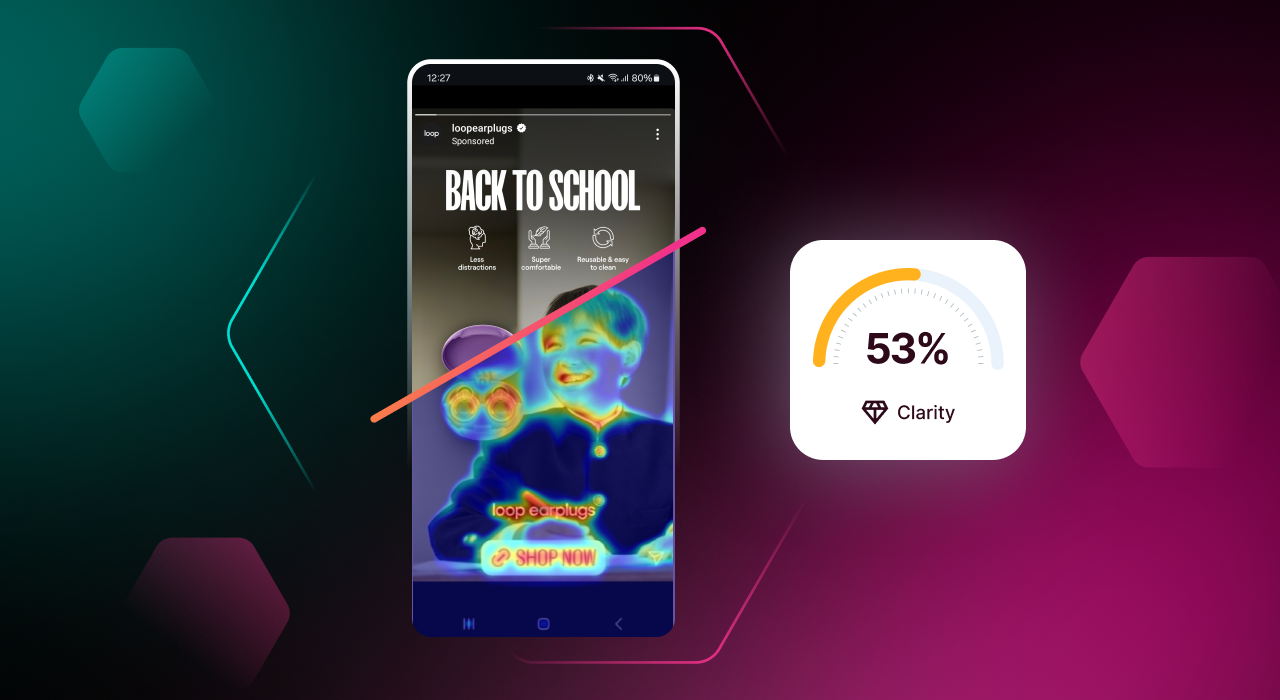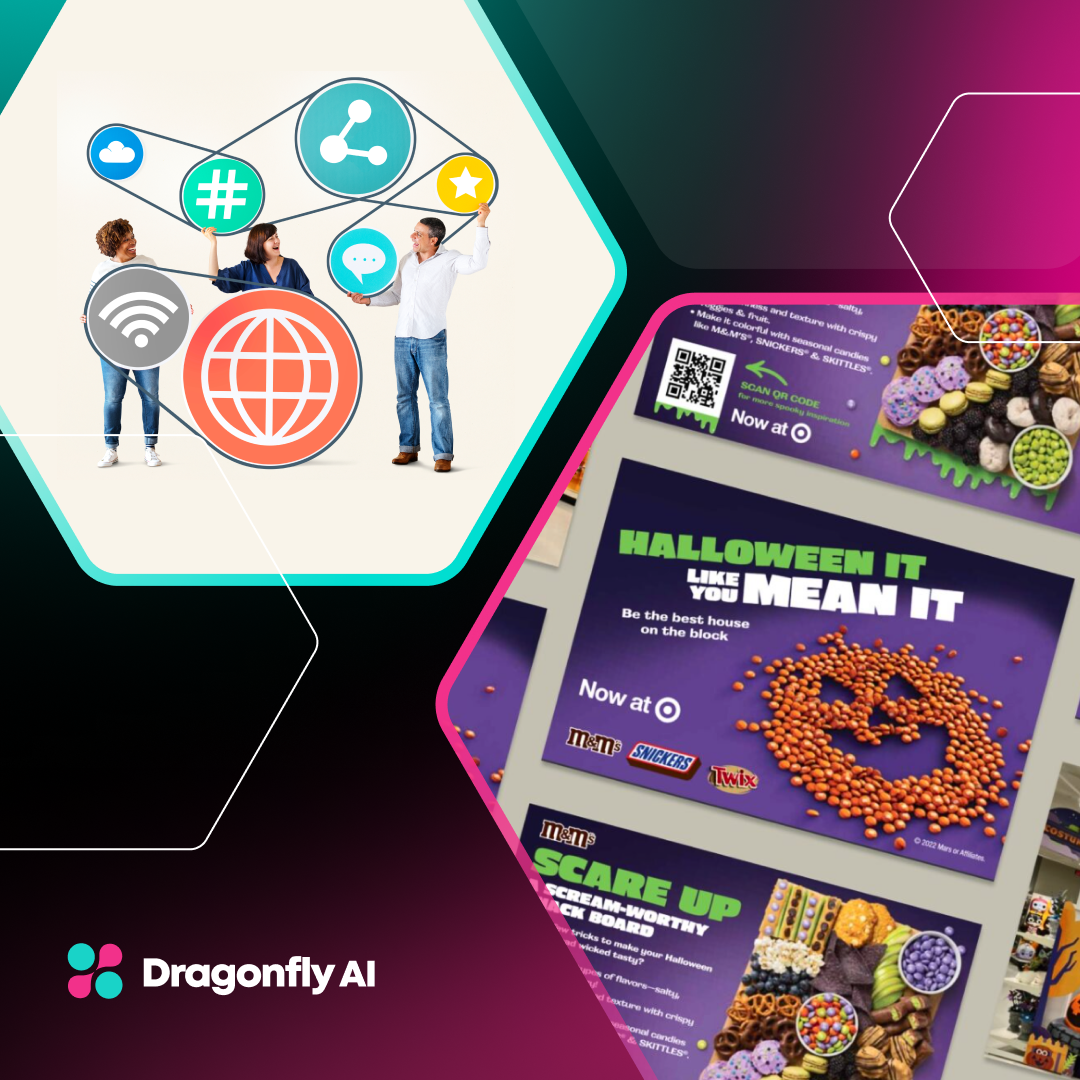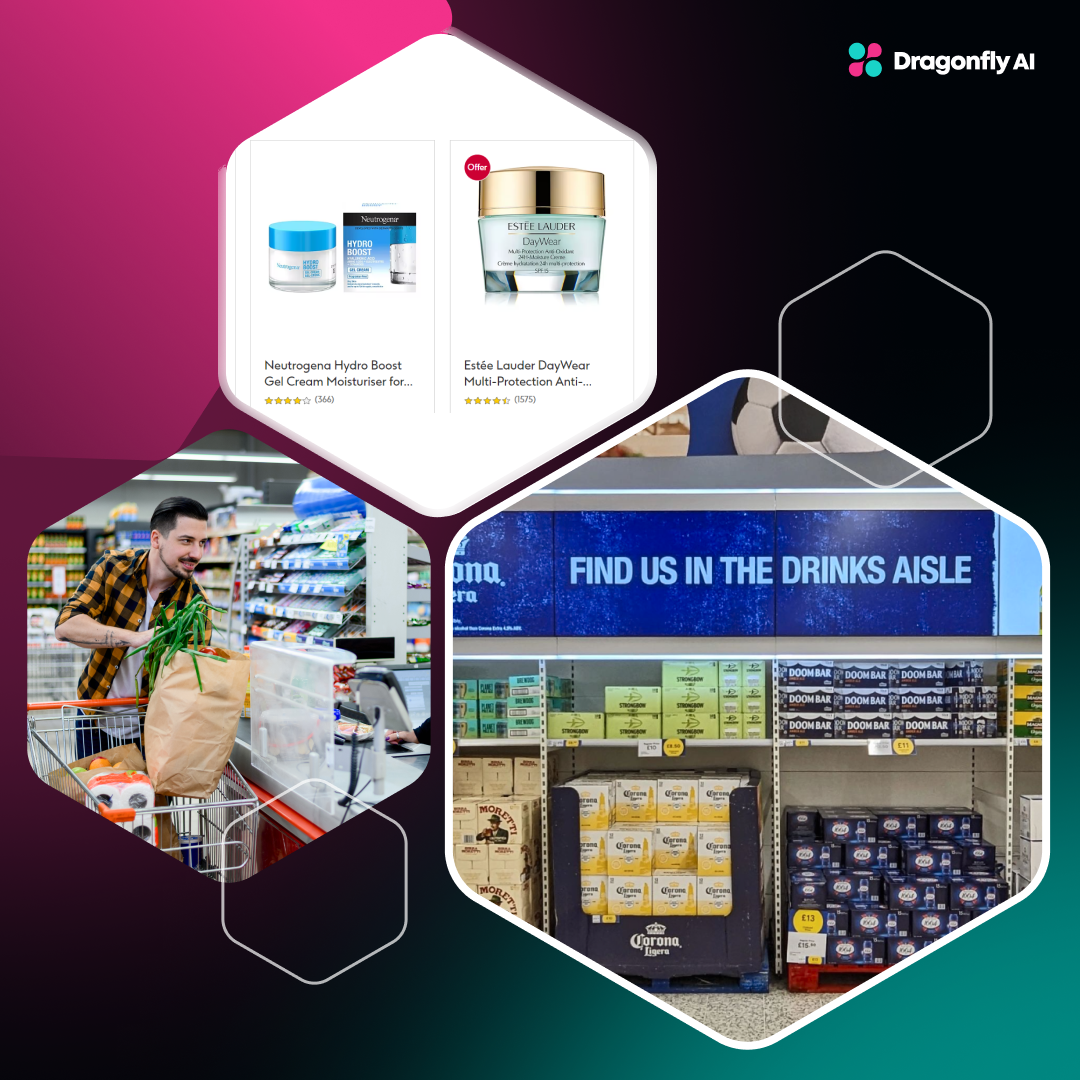How can CPG brands cut through the noise and grab attention in today’s crowded ad space? Increasing competition and rapid change cycles force brands to spend astronomical resources on advertising. In 2024 alone, CPG companies have spent over $48 billion on digital ads.
This fierce environment requires brands to carefully balance creativity with effectiveness. Brands must create campaigns that don’t just look good but also connect with audiences and drive higher conversions.
Here’s where predictive analytics comes in. It helps bridge the gap between creative ideas and measurable impact. Let’s dive into how predictive analytics can enhance creative effectiveness in CPG advertising.
The Evolution of CPG Advertising and Creative Challenges
CPG brands today face a tough choice. Should they push boundaries with innovative campaigns that come with creative risk? Or play it safe with proven strategies that deliver steady, predictable results? This decision gets tougher as digital advertising becomes more competitive and complex.
Studies show that first impressions matter—a first-time ad viewer is 5.7% more likely to make a purchase. However, when someone sees the same ad more than six times, that likelihood drops to 4.1%. In other words, developing a strong initial creative strategy maximizes performance and avoids issues like ad blindness and creative fatigue.
Creative fatigue sets in when ads feel so repetitive that audiences disengage altogether regardless of brand. Likewise, ad blindness happens when people start ignoring ads after seeing the same brand over and over. At worst, such ad overloads can drive consumers to block ads entirely.
Why is Optimizing Ad Creatives so Important for CPG Brands?
Optimizing creatives can make or break your campaign. Here’s why:
- Boosts Your ROI: Strong ad creatives improve engagement, gain more clicks, and drive higher sales. For instance, optimizing ads to highlight organic ingredients and low sugar content inspires more conversions from health-conscious customers. Since personalized ads convert more frequently, they result in higher ROI.
- Builds Brand Connections: Ads that connect with your audience help boost brand awareness and loyalty. For example, modifying ads to highlight your brand’s commitment to recyclable packaging helps cement brand loyalty of eco-conscious consumers.
- Sets You Apart: Unique and memorable campaigns give your brand a distinctive edge in a crowded market. For example, adjusting an ad for an aromatic herbal tea to feature a serene, calming environment emphasizes the tea’s soothing qualities. These creative choices appeal to an audience seeking beverages that help them unwind.
How Predictive Analytics Enhances Ad Creative Optimization
Advertisers work with a mix of elements like CTAs, images, headlines, and descriptions. These creative elements can be combined in countless ways to create a range of ad variations. However, predicting which combination will drive the highest click CTR is not easy.

Predictive models analyze historical data using machine learning and statistical models to forecast future outcomes. This empowers you to target ads based on estimated demand and predicted consumer preferences. Moreover, CPG brands can regularly test visuals, messaging, targeting, and CTAs to uncover the most effective combinations. Here is how predictive analytics helps enhance ad creative optimization in various ways:
Predicting Creative Performance
Predictive analytics offers insights into creative performance in two ways:
- Identifying High-Impact Elements: Analyzing past campaigns identifies which visuals, messaging, and CTAs are more likely to inspire conversions.
- Forecasting Success: Launching a campaign without knowing what will work is risky. Predictive analytics helps you avoid costly underperformance by forecasting which new ideas are likely to resonate.
Optimizing Ad Placement
Placing ads on the right medium for the right audience impacts how well they perform:
- Optimal Channels: Insights from past performance can guide ad placements by identifying which channels are most active for your audience.
- Timing Delivery: Predictive analytics reveals the best times to display ads based on your audience’s engagement patterns.
Personalizing Ad Experiences
Personalization is key to making ads feel relevant to each viewer.
- Customizing Content: Customizing content based on consumer preferences increases engagement by making your ads feel personal and relevant.
- Delivering Relevant Messages: Aligning your messaging with audience interests makes ads feel like a fit, creating stronger connections and conversions.
Preventing Ad Fatigue
- Detecting Overexposure: It tracks how often your audience sees your ad, letting you know when to refresh your content to avoid oversaturation.
- Adjusting Frequency: Managing ad frequency optimally keeps audiences engaged without overwhelming them.
Measuring and Improving ROI
Monitoring and adapting your ads help ensure your campaign performs. Here’s how:
- Tracking Key Metrics: Monitoring metrics allows you to quantify which campaigns are working.
- Identifying Ineffective Campaigns: Analytics helps identify which campaigns aren’t converting well.
The Role of Predictive Analytics in CPG Campaigns
Predictive analytics brings a new level of precision to your creative strategy. Take, for example, a health and wellness brand using predictive analytics to launch an effective digital campaign for organic protein bars:
- Data Collection and Analysis: The team digs into past campaign data. They analyze things like conversion rates, engagement metrics, and click-through rates (CTR) to see what’s worked before. Which images caught attention? What headlines drew clicks? It enables the company to build on proven success by identifying creative elements that drew conversions more frequently. Data such as demographics, browsing patterns, purchase history, and cart abandonment data further enriches the insights. These insights provide a holistic view of audience preferences and interests.
- Predictive Modeling: With these insights, predictive models identify market trends and social media topics that align the best with the product’s appeal. Analyzing the data helped the CPG brand demand high protein bars that aid in muscle recovery after New Year’s Eve. Corresponding retail demand in this period also showed increased demand for gym accessories. Likewise, there was a surge in demand for plant-based proteins and sustainable packaging based on social media trends. With these insights, predictive models help the brand identify different audience segments. Therefore, the company can forecast customer interest and refine their creative approach to appeal to specific consumer values and preferences.
- Personalized Marketing: Predictive models then segmented the audience into three primary groups: fitness enthusiasts, eco-conscious shoppers, and busy professionals. With these segments in mind, the company created tailored ad content to match each group’s needs:
- Fitness Enthusiasts: Ads highlighting the high protein content and muscle recovery benefits. They feature dynamic visuals of athletes in action to appeal to their fitness goals.
- Eco-Conscious Shoppers: Ads emphasizing organic ingredients and biodegradable packaging. They use nature-inspired visuals and messaging that align with sustainable values.
- Busy Professionals: Ads focusing on convenience and quick nutrition. They show relatable scenarios showing the bars as an easy meal solution between meetings.
Predictive analytics helps the CPG brand optimize creatives that truly resonate with its audience. By targeting specific segments with tailored messages, the brand captures attention more effectively. Greater engagement means users are more likely to click, interact, and share content.
Examples of Predictive Analytics in CPG
- Targeted Advertising: Predictive analytics finds the audience segments most likely to engage with an ad. Consider a snack brand wanting to reach young professionals. With predictive insights, brands can time ads for on-the-go snacks during break time when these busy individuals are likely scrolling.
- Personalized Campaigns: Predictive insights help brands make campaigns that feel personal and relevant. For example, a skincare brand might use data to identify consumers who have shown interest in anti-aging products.

- Optimizing Ad Spend: Predictive models maximize the impact of every ad dollar by aligning ads with estimated demand. For instance, a beverage brand might ramp up ad spending during summer months in warmer regions, right when cold drinks are in high demand.
- Forecasting Trends: Predictive analytics allows brands to spot upcoming trends early and adjust their strategies accordingly. For instance, a CPG company noticing a growing interest in plant-based products could pivot to promote these items.
- Reducing Ad Fatigue: Analytics helps keep track of how often consumers engage with ads. If a customer engages with an ad more than thrice, brands recommend new ad content.
- Dynamic Creative Optimization (DCO): Predictive analytics powers DCO by selecting the best creative elements in real time for each viewer. For example, analytics helps brands tailor ad content while promoting a protein bar for fitness enthusiasts and eco-conscious consumers.
Why Predictive Analytics Matters for Creative Effectiveness
Predictive analytics helps CPG brands cut down on trial and error and focus on what actually works. Here’s how predictive analytics helps maximize creative effectiveness:
Ad Tech Innovations
- Real-Time Adjustments: Real-time adjustments keep ads relevant by letting brands fine-tune content based on user engagement. Changing ad content based on audience preferences means no wasted budget on ads that miss the mark. For instance, a beverage brand uses AI to adjust its ad creatives based on engagement data from live campaigns. If a specific video ad performs well among younger audiences but lags with older demographics, AI adjusts the visuals and messaging to better appeal to different age groups.
- Cross-Channel Optimization: Cross-channel optimization ensures you deliver the same type of messaging for a particular customer segment across different channels. It helps maximize impact by ensuring the brand’s message stays consistent across platforms. For example, a fashion retailer coordinates ads across social media, email, and search platforms. When a user clicks on an Instagram ad but doesn’t convert, the ad tech automatically shifts to display similar ads with a personalized discount code on Facebook and search engines.
- Predictive Targeting: Predictive targeting helps brands reach the right people with pinpoint accuracy. Targeting the right audience boosts ROI and keeps uninterested viewers from seeing ads that don’t match their interests. Consider an eco-friendly CPG brand that leverages AI to identify high-intent consumers by analyzing social media interests, search history, and purchase behaviors related to sustainable products. Predictive targeting then maximizes engagement with minimal ad waste by directing ads specifically to environmentally conscious consumers.
Creative Intelligence and Automation
- AI-Generated Creative: AI-generated creative simplifies testing, allowing brands to try new ad ideas without overloading the creative team. AI creates variations, and the team can focus on strategy. For instance, an outdoor gear company can use AI to generate multiple ad concepts for a new hiking shoe launch. AI produces variations of visuals featuring different terrains, weather conditions, and user demographics, enabling the creative team to focus on strategy.
- Automated Testing: Automated testing helps brands find winning ad variations fast. This data-driven approach lets brands refine creatives with real-time insights. For instance, a skincare brand employs AI-powered A/B testing to determine which ad copy and images drive the highest engagement. The AI automatically rotates between variations, tracking real-time results to identify the most effective combination without manual testing.

- Personalized Experiences: Personalized experiences give ads a “just for you” feel, building stronger connections with the audience. For example, a travel agency can leverage predictive analytics to personalize ads based on each viewer’s browsing history and past travel destinations. If users previously searched for beach vacations, they receive ads featuring sunny coastal destinations, whereas someone interested in hiking gets visuals of mountain getaways.
Where Predictive Analytics and Ad Tech Are Heading
The growth of predictive analytics and AI in ad tech is reshaping CPG advertising. These advancements make campaigns more efficient, adaptive, and personalized. Here’s what you need to know:
- Cross-Channel Sync: AI ensures ads are integrated smoothly across different platforms. This creates a unified experience for the consumer. Research from SSRN shows that synchronized media planning and ad delivery keep messaging consistent and impactful.
- Smarter Targeting: Machine learning algorithms refine customer segmentation using behavioral data. With in-depth insights into customer preferences, delivering tailored messages to specific audiences is easier.
- Automated Creative Optimization: Machine learning directs user traffic to different ad versions. This method finds the best-performing content quickly. Studies show automated creative optimization speeds up insights and boosts CTRs.
- AI-Generated Ideas: Generative AI is changing how content is created. Tools like ChatGPT make producing engaging and adaptable branded content at scale easier. This speeds up the creative process and keeps campaigns fresh.
- Dynamic Creative Optimization (DCO): DCO automates ad personalization in real-time. It uses user data, like demographics and browsing history, to adjust content. Research shows that DCO can boost engagement, for instance, Verizon Media saw 21.8% increase in CTR by using real-time data for ad changes.
Case Studies: Predictive Analytics in Action
IBM and Mastercard
Mastercard partnered with IBM Watson Advertising Accelerator to raise awareness about their ‘Stand Up to Cancer’ initiative, where they pledged $4 million for cancer research. Using IBM’s AI-driven platform, Mastercard’s marketing team pinpointed which creative elements engaged their audiences the most. The platform used data like location, device type, and time of day to tailor ads for better results.
The outcome? A 144% increase in their click-through rate. Beyond the numbers, Mastercard gained valuable insights about what makes a creative resonate. For instance, unique calls to action like ‘Start Something Priceless’ drew strong engagement, while more generic ones like ‘Learn More’ fell flat.
Yahoo: Predictive Analytics Enables Dynamic Advertising
Yahoo Gemini’s native advertising platform delivers billions of ad impressions daily to hundreds of millions of unique users and generates significant annual revenue. Advertisers upload different assets for each part of a native ad, like headlines, images, and descriptions.
To optimize ad performance, Yahoo uses predictive analytics to estimate event probabilities, such as clicks and conversions. These predictions are integrated into Gemini’s auction system, helping select ad combinations with the highest expected conversion rates (CVR) for each impression.
This means ads are shown based on data-driven predictions to maximize conversions. An A/B test on this CVR-focused predictive system revealed that it boosted conversion rates by 53.5% compared to the control.
How Predictive Analytics Powers Competitive Advantage for CPG Brands
Predictive analytics and creative intelligence are redefining how CPG brands stay competitive. With predictive analytics and advanced ad tech, you can fine-tune every aspect of your ad strategy to reduce ad fatigue and make every creative choice count.
And the best part? These tools simplify testing and optimization so you get the information you need to build campaigns that feel relevant and impactful without the guesswork. As AI advances, the possibilities for refining your ads and boosting their impact keep getting better.
Want to dive deeper into the benefits? Check out our blog, Breaking Barriers: Predictive Analytics & Personalization in CPG Advertising, to see how embracing these tools can give you a competitive edge.
Or, if you're ready to see Dragonfly AI’s platform in action, click here or book a demo to explore how on-demand creative testing and analytics can transform your advertising strategy.

